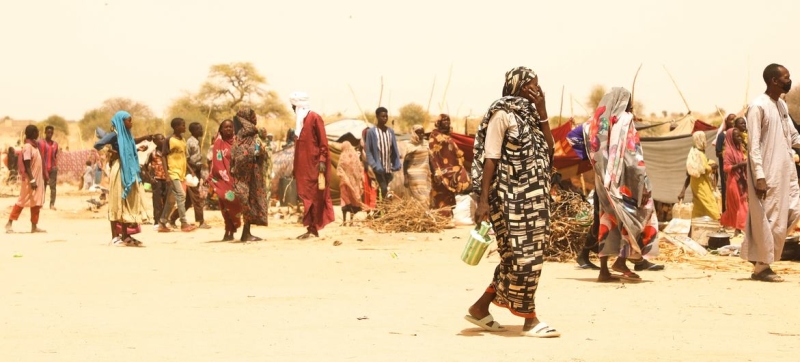
Many Sudanese are fleeing conflict in neighboring Chad, where extreme weather events are common. UN report: Three quarters of refugees end up in countries most vulnerable to climate change Climate and Environment
The world is rapidly plunging into a new cycle of instability, where armed conflicts intersect with worsening climate disasters. Millions of refugees, internally displaced persons and residents of host communities are caught in this dangerous situation. This is stated in a report released today by the United Nations Refugee Agency (UNHCR).
The authors warn that climate shocks are not just disrupting the way of life – they are depriving people of the opportunity to rebuild their lives after conflicts and causing new waves of displacement.
By mid-2025, the number of people fleeing war, violence and persecution had reached 117 million. At the same time, three quarters of them ended up in countries that are most vulnerable to climate threats. According to UNHCR, natural disasters have displaced some 250 million people within their own countries over the past decade. Floods in South Sudan and Brazil, record temperatures in Kenya and Pakistan, severe water shortages in Chad and Ethiopia—extreme events are becoming the last resort for communities already living in a state of chronic instability. It destroys homes, cuts off access to basic services, deprives people of their livelihoods and forces families – many of whom have already fled – to be displaced again,” said UN High Commissioner for Refugees Filippo Grandi.
“These are people who have already suffered great loss. Now they will suffer again – droughts, floods, sweltering heat. And yet they don’t have the resources to start rebuilding their lives,” he added.
In some regions, we are talking not just about difficulties, but about a direct threat to survival. In flooded areas of Chad, refugees from war-torn Sudan are forced to make do with less than 10 liters of water a day. This is several times lower than normal. It is predicted that by 2050, refugees living in camps in the hottest areas will spend up to 200 days a year exposed to dangerous heat stress. The combination of extreme heat and high humidity makes some areas virtually uninhabitable.
Environmental problems only make the situation worse. New data shows that three-quarters of Africa’s land is subject to degradation, and more than half of refugee and internally displaced people settlements are located in areas with the highest environmental stress. This means less water, less food and less opportunity to earn a living. In some areas of the Sahel, the lack of such opportunities is causing people to join armed groups with no other option. So environmental problems feed the cycle of violence.
Yet countries hosting refugees receive only a quarter of the funding they need.
“Funding cuts severely limit our ability to protect refugees from the effects of extreme weather. If we truly want stability, we need to invest in the areas where the situation is most dire. To prevent further displacement, climate finance must reach those communities already living on the edge,” Grundy stressed.
Despite the alarming trends, UNHCR stresses that solutions exist. Both resettlers and their host communities must be part of national climate strategies and plans. As the UN Climate Conference (COP30) kicks off today in Belem, Brazil, UNHCR is calling on governments, financial institutions and international organizations to take concrete, long-term action to integrate refugees into climate planning, invest in adaptation and ensure climate funds reach the most vulnerable communities.
